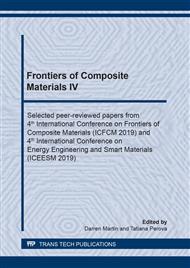p.103
p.109
p.117
p.123
p.130
p.136
p.143
p.149
p.155
Analysis of the Effect of Fly Ash on Compressive Strength of Concrete Using Neural Network and Parameter Analysis
Abstract:
Compressive strength is a crucial design index of fly ash blended concrete. This study presents an estimation model to show the effect of fly ash on the strength development of concrete. First, a neural network model is proposed to estimate the compressive strength of fly ash blended concrete. The input variables of the neural network are water-to-binder ratio, fly ash replacement ratio, and curing ages. The output result of the neural network is a strength. The range of water-to-binder ratio is from 0.3 to 0.5, the range of fly ash replacement ratio is from 0 to 0.55, and the range of test age is from 3 days to 180 days. The neural network gives an accurate evaluation of compressive strength. Second, parameter analysis is carried out based on the neural network model. The results of parameter analysis show that the effect of fly ash on strength is dependent on water-to-binder ratio. The using of high-volume fly ash with low water-to-binder ratio concrete is a rational option.
Info:
Periodical:
Pages:
130-135
Citation:
Online since:
June 2020
Authors:
Keywords:
Price:
Сopyright:
© 2020 Trans Tech Publications Ltd. All Rights Reserved
Share:
Citation:


